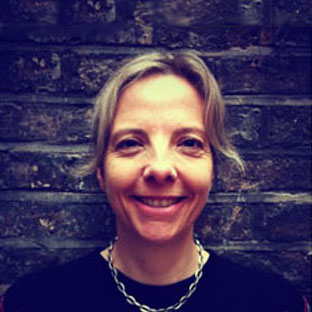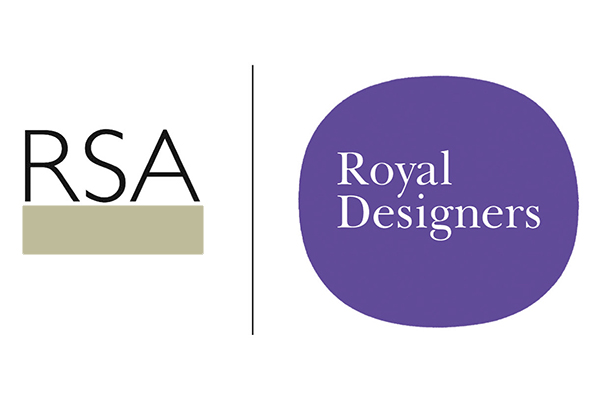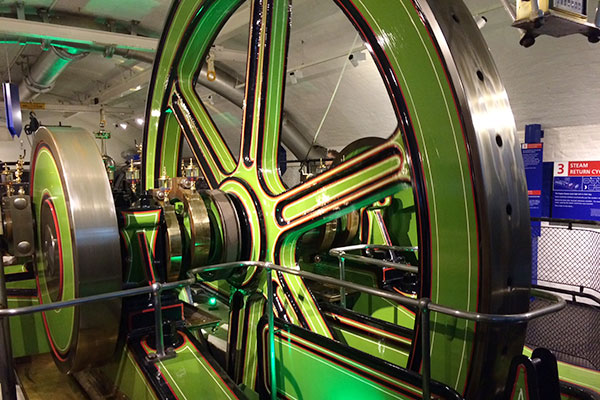Last week I did a talk at TYPO Berlin, a long running and well respected design conference. It's called TYPO, so many people think it's a conference about typefaces, but in fact it has broadened out its definition of design somewhat in the last few years.
I've been at The RSA for a few months now, and before that I ran a design agency, Airside, for 14 years, so there have been a lot of changes in my life over the last while. Not only that, but I've felt the design industry morph around me hugely in the last 10 years or so, and I've experienced my own practice as a designer change too. So for the initial part of my talk at TYPO I decided to attempt to bring some clarity to the changing role of the designer.
I started my design career as a graphic designer 23 years ago, then when new technology became so exciting that I just couldn't ignore it, I moved on to become an interaction designer. More recently as the director of a design agency, I not only broadened out the kind of design projects that I worked on - from websites to exhibitions, toys and animation, but also started becoming involved in the organisational change of some of our clients. It seemed like a natural step; in the process of trying to understand their business so that we could communicate their message to the target audience, or to create really great content for their website, we started seeing problems and blockages in the organisation itself. It seems that the designers brain is very good at understanding complex problems and redesigning systems, and more and more designers are moving in a direction which reflects this.
I came across the diagram above defining the different stages of design, which seemed to me to be a good place to start. On the left, you have style. What something looks like. The craft of aesthetics. Beautiful design makes the medial prefrontal cortex light up, just like sex. Sound, touch and even smell can be used by designers to get the hormones racing.
Moving right, you get to form and function - how exactly will the thing that you're designing work, and will it work in the right way. Then we have problem solving - a lateral, agile thinking process. And finally we get to framing, which is my favorite part - questioning everything right at the beginning. In my opinion designers don't ask this enough.
At the beginning of my career, I only really understood design as style, but now I see that the real power comes when you broaden out the definition along this scale. And of course you need all four of these elements for truly great projects. I think there are a lot of people who still believe that design is only about style, but I’ve come to realise that with more complex projects, you really need all four of these bases covered. And these days I find myself gravitating towards the problem solving and framing end.
I’m definitely not saying that style isn’t crucial - if you do some serious work up the framing and problem solving end and it isn’t beautifully realised, then you won’t have the impact you need.
I came across some more diagrams, from the NextDesign Leadership Network. When I saw them, I realised that they had articulated the change I had been experiencing very well.
This first diagram shows that the way a designer works has been changing. From work alone, or in a single discipline, to cross-discipline team work.
And what we face is changing - problems are becoming more complex which is why we need multidisciplinary teams to face them. And we need to have a top level understanding of as many of those disciplines as possible.
Also, the time cycle of design is changing - we are moving from projects that had a beginning and an end to an iterative ongoing process.
This is the journey that I’ve taken so far in my career and I believe much of the design profession is taking a similar journey. For instance, the newer design disciplines such as service design are far more cross discipline, complex and iterative than more traditional kinds of design. It's a really exciting time to be a designer - all over the world we are seeing social innovation companies spring up that are a perfect marriage of business, technology and design. Design is becoming embedded in areas that would have seemed impossible 20 years ago and we now have an opportunity to make a real difference.
I'm really enjoying my new role at The RSA - watch this space for news of projects that we're developing - they will of course be iterative, complex projects that require cross discipline collaboration, and begin at the framing and problem solving end, but are delivered with style!
Related articles
-
Royal Designers at 80: a celebration of RSA design past, present and future
Melanie Andrews
2016 marks the 80th anniversary of the Royal Designers for Industry (RDI). In a special event at the RSA we looked back at some of the life-changing works of the past.
-
Dyslexics think differently
Jim Rokos FRSA
Jim, a former winner of the RSA Student Design Awards, challenges perceptions of dyslexia by highlighting its positive effects and close association with design.
-
Blog: Saving Design Thinking from itself
Sevra Davis
We have arrived at a critical moment for design thinking. Sevra Davis explores how we can champion a radical new future for design.








Join the discussion
Comments
Please login to post a comment or reply
Don't have an account? Click here to register.
Sounds good - have you got any specific links or contacts? Thanks!
just thinking you should check out the great work with design factory at aalto finland and swinburne - melbourne, australia !